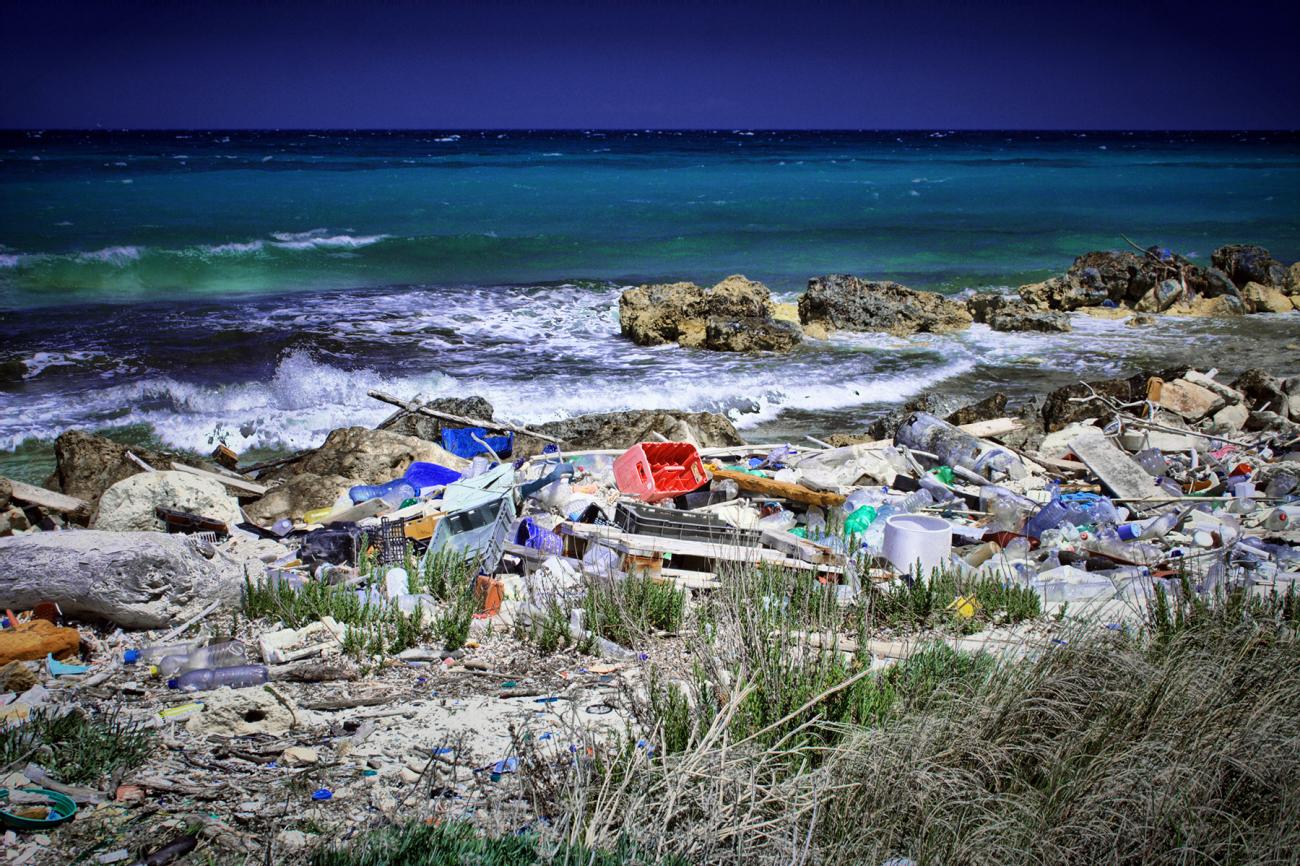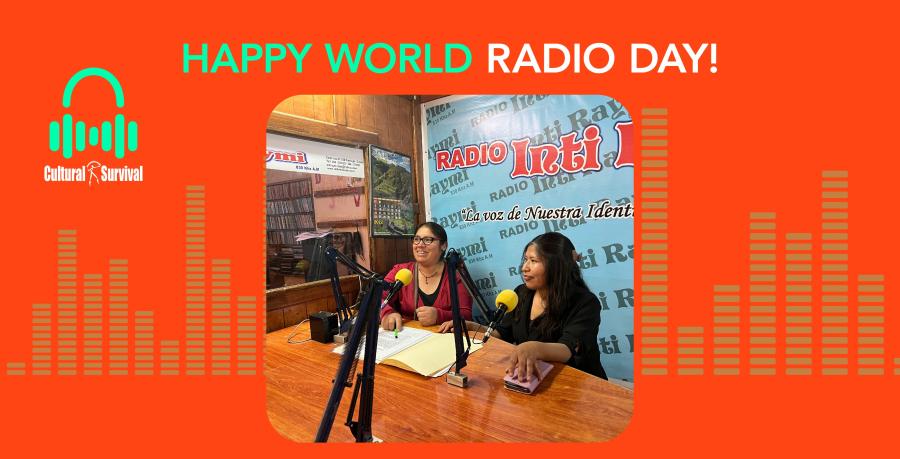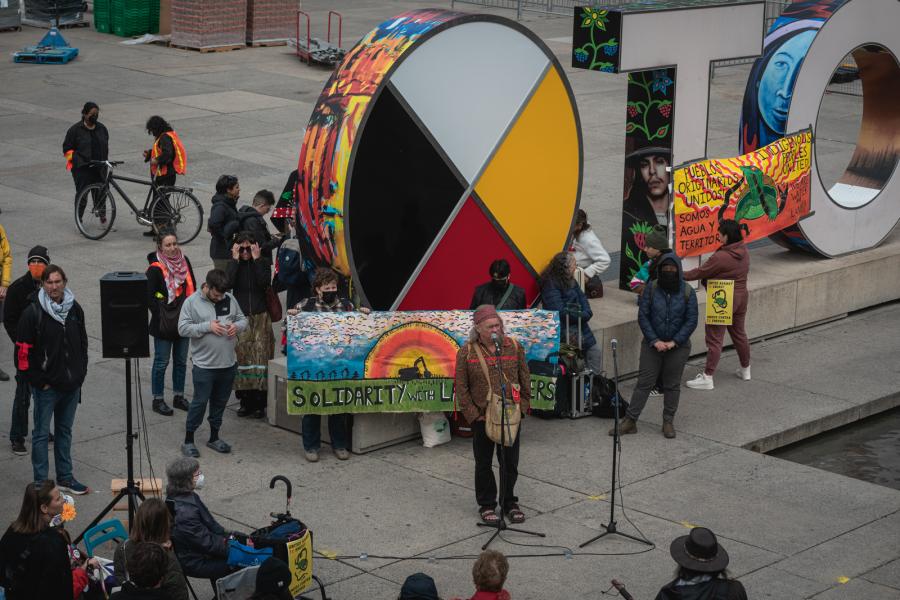
By CS Staff
The global problem of plastic pollution is now one of the biggest problems affecting all ecosystems, organisms, people, and the health of the entire planet. Because of its low price, plastic is used everywhere and on a monumental scale. It is found plentifully in places as remote as the Arctic and on Mount Everest. And plastic production is only increasing, with global production reaching 400.3 million tons in 2022. From 1950 to 2017, 9.2 billion tons of plastic were produced, of which about 7 billion tons, or 76 percent, became plastic waste that ended up in landfills. This global catastrophe has especially impacted Indigenous Peoples around the world.
On March 2, 2022, the UN Environment General Assembly adopted Resolution 5/14 as a starting point for the development of an international agreement on the production and use of polymers, the chemical compound from which plastics are derived. Accomplishing this task has been delegated to an Intergovernmental Negotiating Committee (INC) to draft the text of the international legally binding resolution by the end of 2024. The adopted resolution stipulates that the document should be legally binding and cover the full lifecycle of plastic, including its production and utilization, and include existing plastic pollution.
Paragraph 4 of the resolution establishes that the Intergovernmental Negotiating Committee, when negotiating the instrument, should consider the best available scientific evidence, including Indigenous and Traditional Knowledge, as well as the need for a financial mechanism to support the implementation of the instrument, including the option of a special multilateral fund.
Three international meetings of the Intergovernmental Negotiating Committee have taken place so far with small numbers of Indigenous Peoples due to a lack of funding for their full and effective participation in the negotiation, despite the fact that this will be the most significant international environmental instrument since the 2015 Paris Climate Agreement. During the first three meetings, delegates made proposals on the zero draft agreement, the establishment of governing and subsidiary bodies, future commitments, financial issues, and most importantly the main positions on issues to be regulated, including the elimination of single-use plastics.
The Business of Plastic
Plastic is a big business. Since 2005, global exports of plastics and plastic goods have more than doubled, exceeding $1 trillion in 2018 and reaching nearly $1.2 trillion in 2021. Wealthy, overindustrialized countries continue to sell plastic garbage to landfills in countries in the Global South, polluting the environment and poisoning the health of entire populations. Only an estimated 9 to 15 percent of plastic is recycled and recovered, and 32 percent goes directly into freshwater bodies, oceans, and landscapes. Another 14 percent is burned, contributing to climate change and poisoning the air. The rest goes to landfills, which leads to increased emissions of toxic substances and microplastics into the environment.
Source: https://www.grida.no/resources/14870
The issue of trade has become one of the sticking points in the ongoing negotiations for a future agreement. Some countries consider the negotiations to be a trade agreement because of the multifaceted relevance to international trade; plastics are a whole market, from the production of its oil and chemical components to the sale and utilization of plastic, and ultimately its disposal. The zero draft also includes text on a provision on trade in polymers, chemicals, products, plastic waste, and the transportation of plastic waste across borders.
The last meeting of the Intergovernmental Negotiating Committee showed that the Parties, for which the oil business is a priority, are delaying negotiations or unwilling to negotiate entirely. The original goal of the international agreement was to completely stop the use of disposable plastic products by 2040 and to use only “safe,” i.e., non-toxic materials that will not release hazardous chemicals throughout their lifecycle. This would represent a huge loss for the oil corporations that produce plastic.
Three rounds of negotiations on the development of a new international agreement have already taken place, but in the last meeting (INC-3), Russia and Saudi Arabia—two countries most dependent on revenue from the oil industry—blocked the possibility of resuming the contact group on the development of inter-sessional work on the last day of negotiations. This means that negotiators have lost the six months between INC-3 and the upcoming INC-4 that could have been spent on intersessional meetings and document development. Two more rounds of meetings will be held this year to determine the future of an international agreement on plastics.
Violations of Indigenous Peoples’ Rights
Plastic waste not only contributes to environmental degradation but is also a factor in climate change and a threat to Indigenous Peoples, their territories, waters, traditional lifestyles, health, and Traditional Knowledge. The main raw material for plastic production is oil, the extraction of which violates the rights of Indigenous Peoples and damages their territories and natural resources. The more plastic is produced, the more fossil fuels are needed and the more the climate crisis intensifies.
Large extractive corporations not only destroy the nature, land, and water of Indigenous Peoples but also pollute the air through the processes of plastic production and recycling, including direct incineration of garbage and plastic waste.
Source: https://www.grida.no/resources/14888
At the other end of the cycle, rich countries send huge amounts of plastic waste to poorer countries for recycling, where much of the residue is simply buried in the ground, thrown away, or even burned, causing serious health consequences. The garbage is sent to places where the environmental, social, medical, and legal situations are poorly regulated. Out of desperation and poverty, Indigenous Peoples frequently become waste workers, facing increased daily exposure to chemicals from dismantling and improperly burning waste, literally suffocating and dying from plastic.
Additionally, every year, 12.7 million metric tonnes (14.7 million tons) of plastic made from fossil fuels ends up in the oceans, equivalent to the continuous oil spill that occurs around the world every day. The largest landfill in the world, the Great Pacific Garbage Patch, currently covers an area of about 1.6 million square kilometers.
Plastics on ocean surfaces, coasts, riverbanks, and landscapes continuously emit methane and other greenhouse gasses, and these emissions increase as the plastic continues to break down. The main problem with plastic is that it does not biodegrade; no natural process can fully break it down. Instead, plastic photodegrades, which means it breaks down into smaller pieces of plastic called microplastics (plastic fragments less than 5 mm in diameter). This is a serious threat to human health, especially to Indigenous Peoples, who are the most dependent on nature.
Indigenous Peoples whose traditional diet is based on fish and seafood are the most affected by plastics. There is no separate data, reports, or other official statistics on the impact of plastic on Indigenous Peoples, but according to Ocean Plastic Debris Education Research and Awareness, one in three fish caught for human consumption contains plastic. The full extent of the effects on human health is still unknown as such studies are just beginning, but there is already evidence that microplastics have been found in the lungs, livers, spleens, and kidneys of newborn babies, and even in the placentas of pregnant women.
The February 2019 report “Plastic & Health: The Hidden Costs of a Plastic Planet,” states: “Microplastics entering the human body via direct exposures through contact, ingestion, or inhalation can lead to an array of health impacts, including inflammation, genotoxicity, oxidative stress, apoptosis, and necrosis, which are linked to an array of negative health outcomes including cancer, cardiovascular diseases, inflammatory bowel disease, diabetes, rheumatoid arthritis, chronic inflammation, autoimmune conditions, neurodegenerative diseases, and stroke.”
The latest UN Environment Programme assessment, “From Pollution to Solution: a global assessment of marine litter and plastic pollution", emphasizes that microlitter is becoming a serious threat to coastal and Indigenous communities where marine species are the main source of food. The assessment highlights that marine plastic has wide-ranging impacts on all aspects of society, including human well being and mental health, especially when culturally and spiritually significant animals such as whales and turtles are lost because of plastic pollution. The assessment notes that “there is substantial evidence that chemicals associated with plastics such as methylmercury, plasticizers, and flame retardants can enter the human body and are associated with serious health impacts, especially in women and in certain coastal Indigenous communities where marine species are the main source of food.”
Returning to the Process of International Agreement on the Production and Use of Plastic
While some countries attempt to stymy the developing work of the future International Agreement on plastic, two additional meetings of the Intergovernmental Negotiating Committee are scheduled in 2024. The fourth session (INC-4) is scheduled for April 23–29, 2024 in Ottawa, Canada, and the fifth session (INC- 5) will take place November 25-December 1, 2024 in Busan, Republic of Korea.
The current draft document is raising a lot of controversy and questions and will be adjusted and reduced in page length. The participation of Indigenous Peoples and friendly Parties made it possible to introduce suggestions to the text of the draft document on the rights of Indigenous Peoples, including the United Nations Declaration on the Rights of Indigenous Peoples, and recognizing the importance of Traditional and Indigenous Knowledge in the preamble while introducing the principle of Free, Prior and Informed Consent in terms of information sharing and awareness raising, education and research, and other proposals on Indigenous Knowledge and other cultural and socio-economic factors.
There is much work to be done and difficult negotiations ahead. In order to defend the future of Indigenous Peoples, it is necessary to continue the fight for the rights of Indigenous Peoples and Mother Earth. Cultural Survival will continue to inform you about this process and its further development.
Photo by Paolo Margari.


